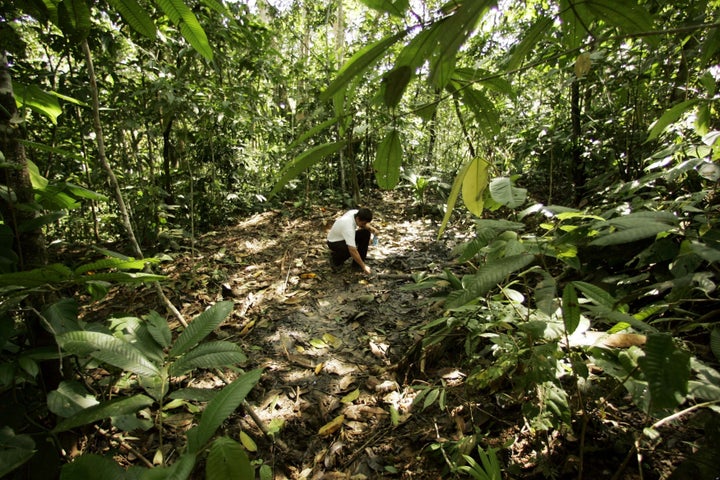
Anyone traveling to Latin America these days is struck by the contrast between the brisk growth and optimistic outlook of the region and more pessimistic views from vantage points further north.
I was in Bogota, Colombia, when Standard & Poor's downgraded the United States' AAA credit rating and global markets followed with volatility amid concerns about debt and economic slowing in the most developed countries. The entire world needs and is rooting for a strong and sustained recovery in the U.S. and Europe.
For Latinos in the U.S., the stakes are especially high. A highly-publicized report from the Pew Hispanic Center last week concluded that Hispanics suffered more than any other U.S. demographic group from the global crisis of 2008-2009.
This astonishing report estimated that 66 percent of all Hispanic median household wealth in the U.S. vanished as a result of the last global crisis, driven by severe blows to the construction industry and home prices, which left many Latino homeowners underwater on their mortgages.
Contrast this picture with the dynamic scene last week in Bogota, where Colombian President Juan Manuel Santos, former Brazilian President Luis Inacio "Lula" da Silva and I hosted a historic conference of more than 600 entrepreneurs and political leaders from both countries determined to take their future into their own hands.
We gathered high in the Colombian Andes to explore ways to increase investment, unleash new trade flows and deepen economic integration between the two neighboring nations in a way that benefits both countries -- and the United States.
Brazil, the regional behemoth, and Colombia, a rapidly developing country with South America's second-largest population, embody the dramatic economic and social advances that have changed the face of Latin America over the last decade. Brazil has lifted more than 40 million people out of poverty and into the middle class over the last 7 years, a remarkable accomplishment capped last year by its ability to attract more than $48.5 billion in direct foreign investment, a previously unimaginable sum in our region.
Colombia, meanwhile, has emerged from its long, dark night of protracted war against its drug cartels and extremist armed groups to become one of the most dynamic economies in a region where growth was more than three times higher last year than the world's most developed countries.
In both nations, economic progress has been accompanied by important improvements in social indicators such as infant mortality, education and water and sanitation. Both countries achieved these advances in large part as a result of rapidly growing trade with China, which is now Brazil's largest trading partner and soon will be Colombia's as well. This South-South cooperation is at the heart of Latin America's quiet transformation, the new dynamic driving global economic growth in recent years.
If Brazil and Colombia continue their current rates of growth, their poverty would diminish from roughly one-third of their populations currently to less than 10 percent within 20 years. Combined, the two nations would have more than 180 million people in the middle class.
Now extrapolate that across an entire region. Consider the business opportunities this would create on both ends of the hemisphere. Think of the growing demand for cell phones, software, consumer goods, pharmaceuticals, construction equipment, travel and entertainment that the U.S. could provide. Imagine the possibilities for Latinos in the U.S. to deepen their economic ties with companies and markets in their countries of origin.
This promising future is grounded in Latin America's new, hard-earned macroeconomic fundamentals. The region once renowned for its staggering inflation and debt now has lower per-capita debt and fiscal deficits than Europe or the U.S. and has lowered its overall inflation rate from above three figures to an average of about 7 percent.
Serious challenges remain, including recurrent inflationary pressures and currency fluctuations that could harm exports. The sharp drop in the region's stocks last week show that they are not immune to the market volatility in Asia, Europe and on Wall Street. Another global crisis could lead to an economic slowdown in China, in turn driving down demand and prices for the region's commodities. To protect against these risks, Latin America and the Caribbean must do more to improve education, foster innovation, build new infrastructure and remove trade barriers and other obstacles to growth.
But as Presidents Santos and Lula demonstrated last week in Bogota, Latin America has a new bounce in its step. No longer content to wait for others to lead, the region is determined to find its own way and shape its own destiny.
In uncertain times like these, the world should take notice. A century-and-a-half ago, when the United States was developing as a nation, a New York newspaper editor, Horace Greeley, famously exhorted his countrymen to look to its new frontiers. "Go west, young man," Greeley said. "Go west."
Today, as the world increasingly depends on newly emerging markets to help lead it out of its economic malaise, a new realization is dawning. For a refreshing reminder of the quintessentially American optimism, energy and drive that historically have gone hand-in-hand with opportunity, I say: Go south, my friends. Go south.